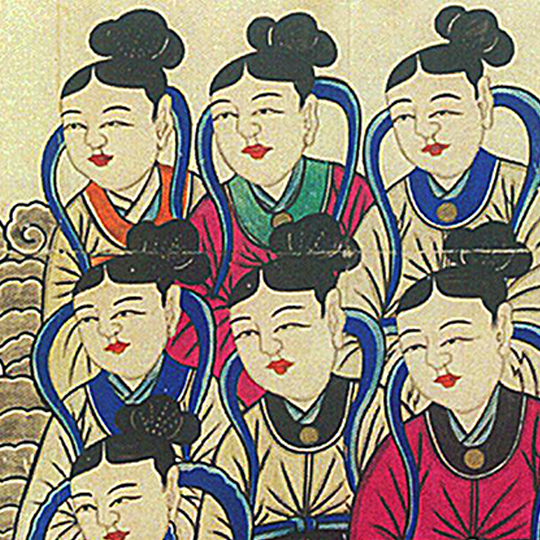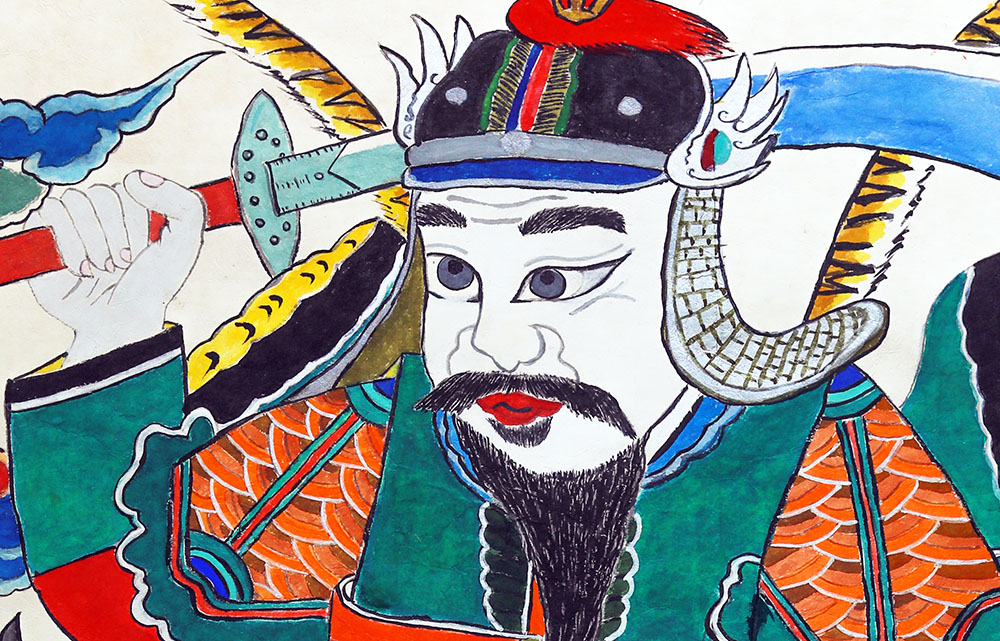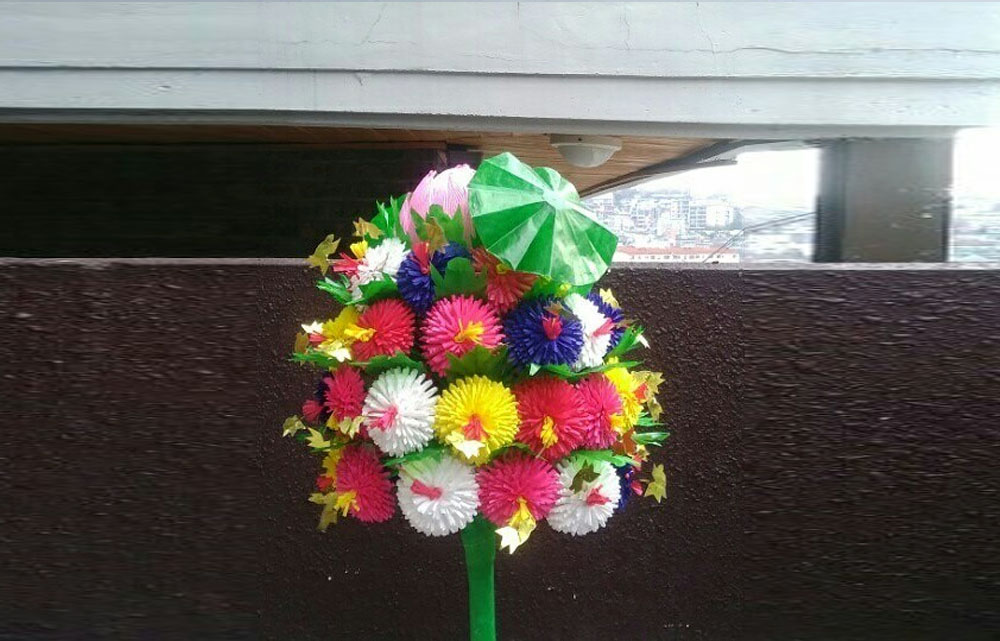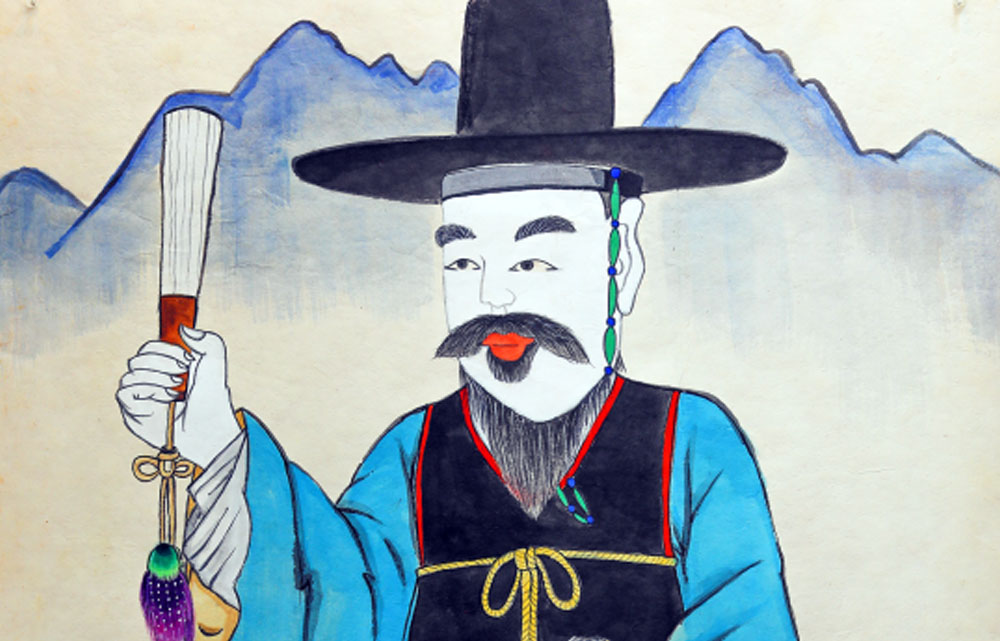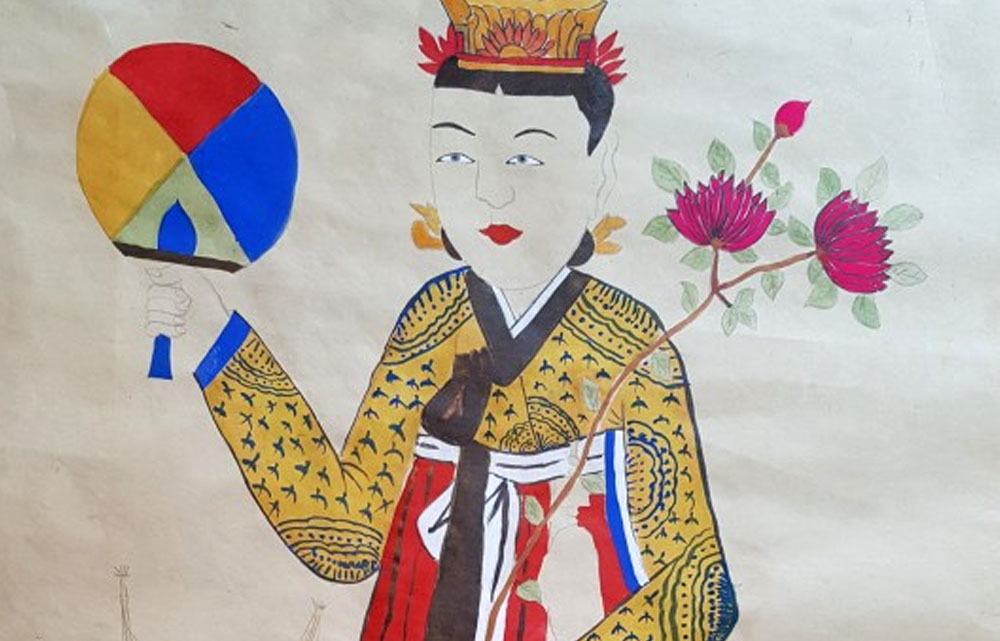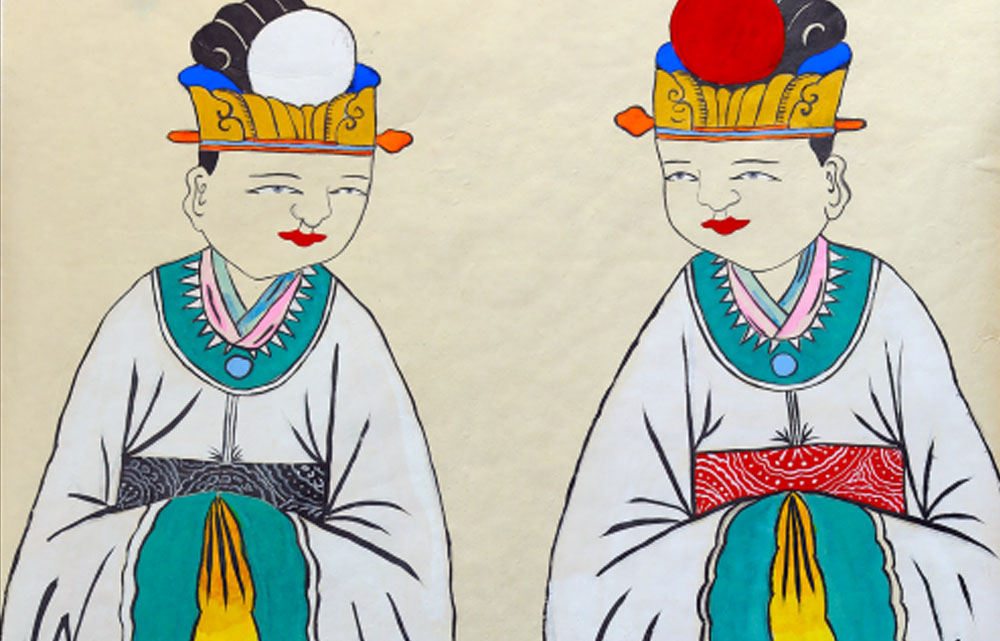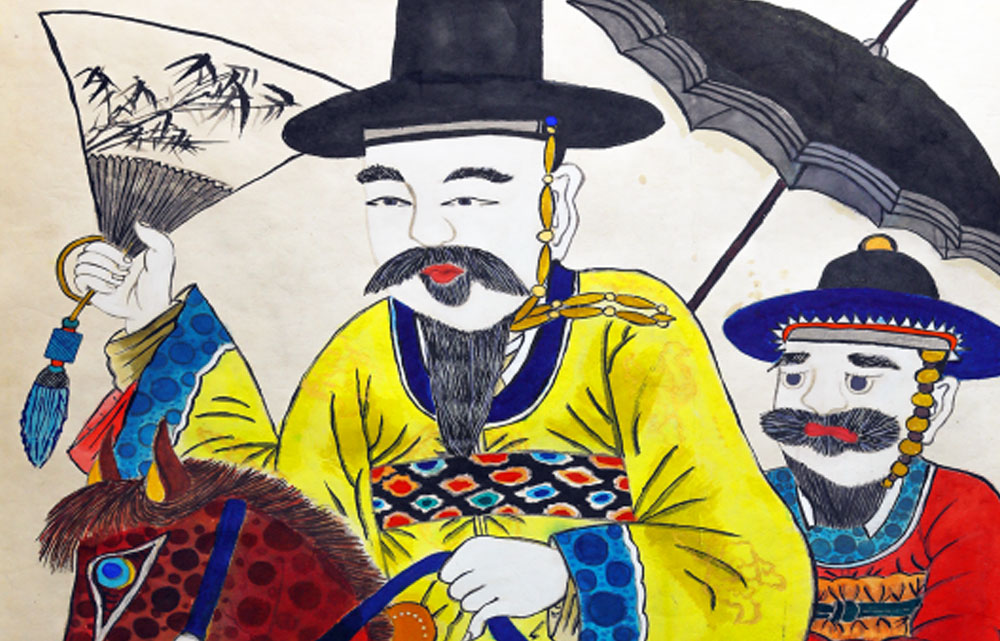
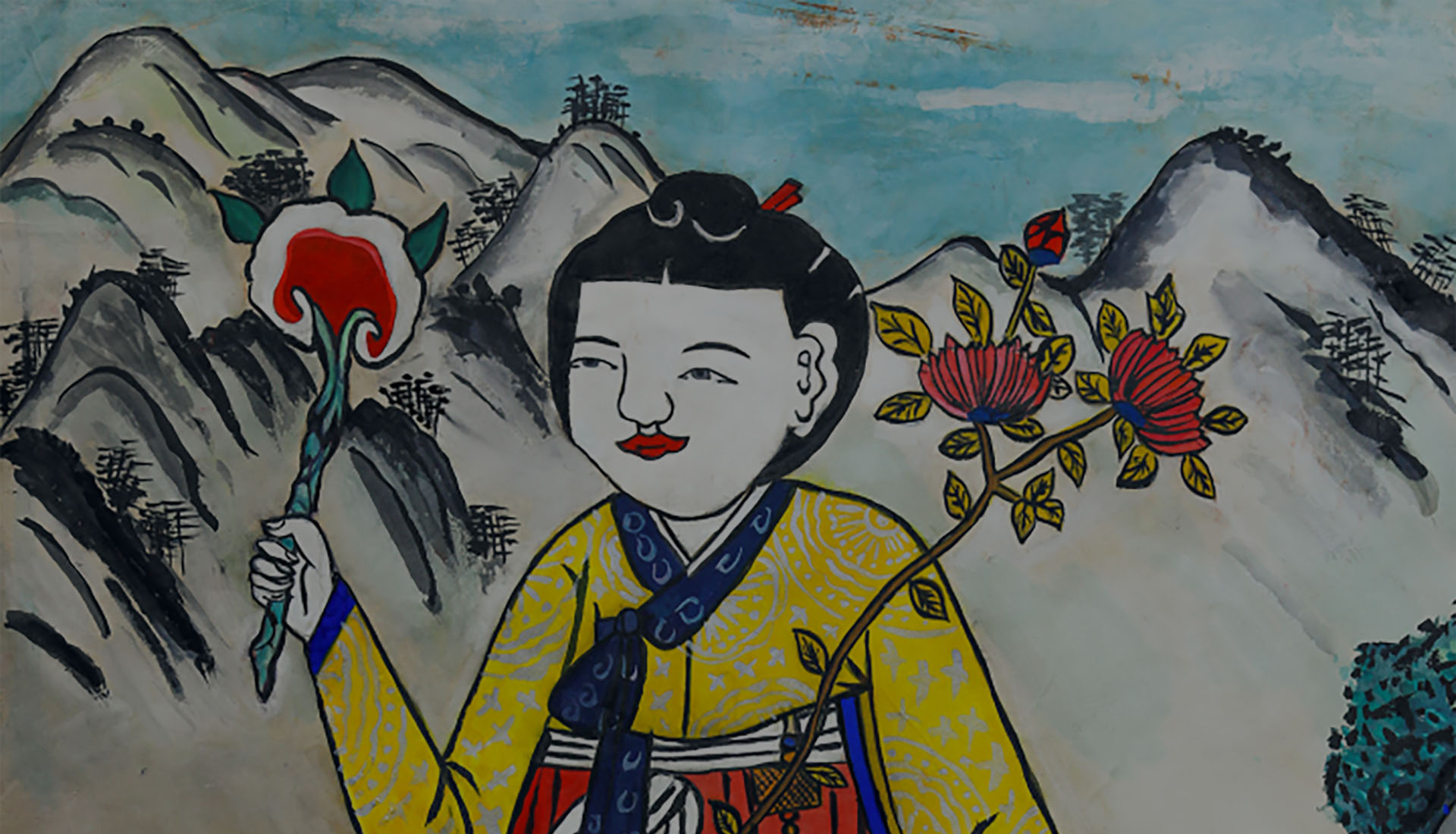
MANSHIN
As the first installment of the K-Culture NFT Project, a revival of Korean traditional art organized by MOI DAO,
we present the works of painter Cho Sung-yeon, a disciple of the famous Kim Geum-hwa's gutpan.
As the first installment of the K-Culture NFT Project, a revival of Korean traditional art organized by MOI DAO, we present the works of painter Cho Sung-yeon, a disciple of the famous Kim Geum-hwa’s gutpan.
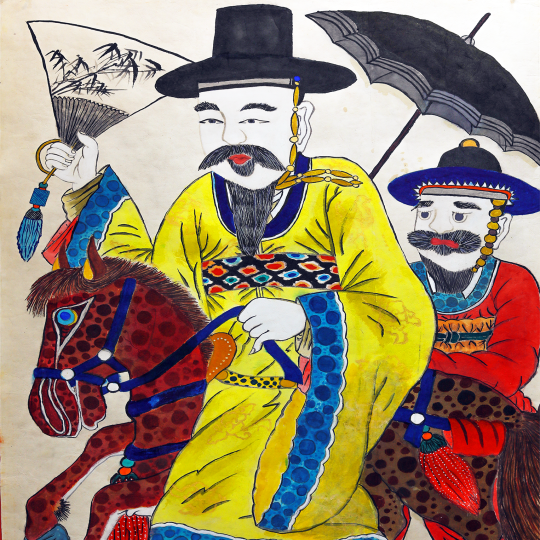
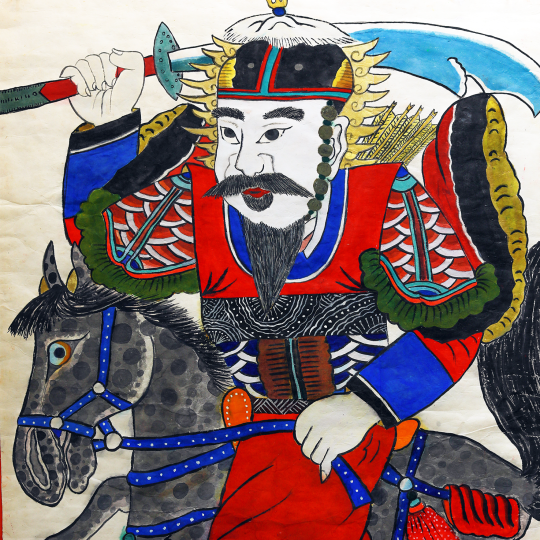
Cho Sungyeon
According to the Encyclopedia of Korean National Culture, ‘gut’ is a ritual in which a shaman, a priest, offers sacrifices to the gods and asks them to control human destiny, such as good fortune and bad fortune, through song and dance.
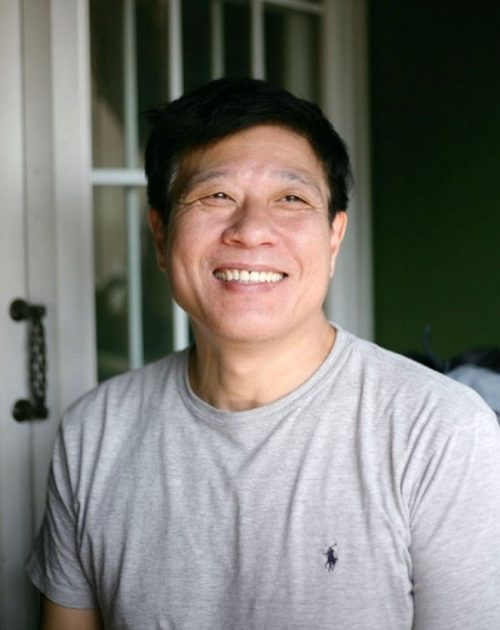
Profile
In that sense, gut is a behavioral phenomenon that attempts to transform finite human existence into infinite eternal existence, and a place of communication where gods and humans meet.Naturally, gut is a process in which many offerings are made to look good to the gods, and the gods are entertained by wearing colorful costumes and dancing to the musical accompaniment of jaebyeong (musician) to pray for their wishes and send off the satisfied gods well. Once the deity has been entertained and sent away, a festive version of the ceremony takes place, where the people involved share offerings, dance, and enjoy themselves.
The main character of the ritual is of course the shaman, but the jaebi, who lead the shaman to enter the realm of the gods, help him to perform the ritual in an exciting way, and immerse the participants and onlookers in the ritual for a long time and make it an exciting festival, are the indispensable supporting cast.
Cho Sungyeon '79 is one of them. However, he is not an ordinary jaebi. He is the jaebi of Kim Geum-hwa (Important Intangible Cultural Property No. 82-2), a national and global pantheon of gods. Sometimes he stands in front of the stage and opens the way with his exciting quackery, and sometimes he plays the janggu from the side to continue the gutpan. He is an indispensable part of Kim Geumhwa's gutpan and his son, who worships him as a 'god mother'.
What is a MAJI
Unlike the old maji, the maji that have been circulating in the world for a long time are only colorful, have no depth of meaning, and do not have a sense of clarity. Artist Cho Sung-yeon took up the art of painting in response to this disappointment and has been devoting her full attention to depicting the divine Maji in each piece.
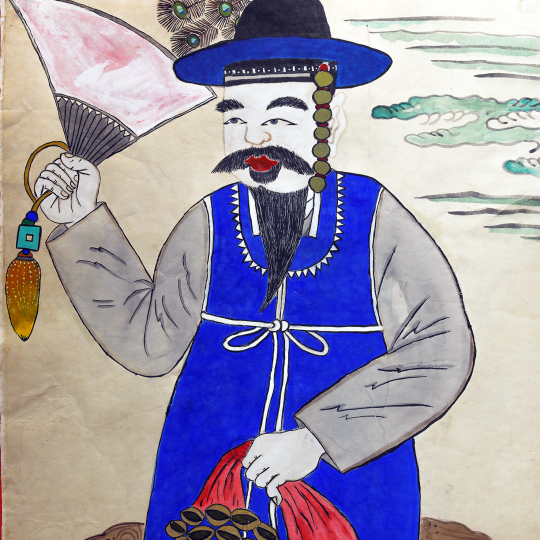
The artists produce Buddhist statues of all the gods, commonly referred to as maji or hwan, that are placed in shrines and temples. He strives to make the precious maji for those who worship the gods with a heart that honors the gods.

Gallery
Experience the profound creativity of Sungyeon Choi, whose long career in the field has
given him a unique creative perspective.
Interview
MOIDAO revive the legacy and spirit of Manshin Kim Geumhwa, a symbol of Korean shamanism, through NFTs and Metaverse, and create new added value in collaboration with Moi Dao to maximize project synergy
Q: I watched the documentary films Manshin (2014) and Silk Road (2013) about the life of Kim Geum-hwa Manshin. You seem to be the second most featured person in the films after Manshin, how did you get involved?
I joined the Folk Song Research Society, a cultural movement organization that recognized folk songs as the songs of the people and the nation and developed a cultural movement through them. This is where I met Kim Kyung-ran, who was the new daughter of Kim Geum-hwa, and through her I was connected to Kim Geum-hwa.
Q: It must not have been easy for Kim Geum-hwa to become Manshin's Janggujaebi.
I couldn't easily become his jaebi, and at that time, the jaebis of Manshin were all women, so it was hard for a man to join, but they were also very arrogant, so they didn't teach me well. After hard
Q: In movies and photos, I've seen people playing the janggu or gong, and wondered if they were blessed with a naerim-gut.
I call Dr. Geum Hwa Kim 'Godmother', and it might have sounded like that because we go to Good together and she helps me with various things. Dr. Geum Hwa Kim is very active in Korea and abroad, and many of her daughters are foreigners. I can speak English and Chinese, so I send emails and letters abroad on her behalf, and because she is elderly, I also act as an interpreter and guide when she goes abroad.
Q: I know you are one of Ms. Kim's favorite students. At the end of last year, you were selected as a teaching assistant by the Cultural Heritage Administration. What is your role?
The West Coast Baeyeonsin Gut is a village festival held in fishing villages on the west coast where fishermen pray for a good harvest, and also a village festival that seeks peace by preventing evil spirits from the villagers. It is a Hwanghae-do festival that is actively practiced on the west coast, including Incheon, Soraepo-gu, and Hwasu Pier, and on October 16, the festival was held in Soraepo-gu.
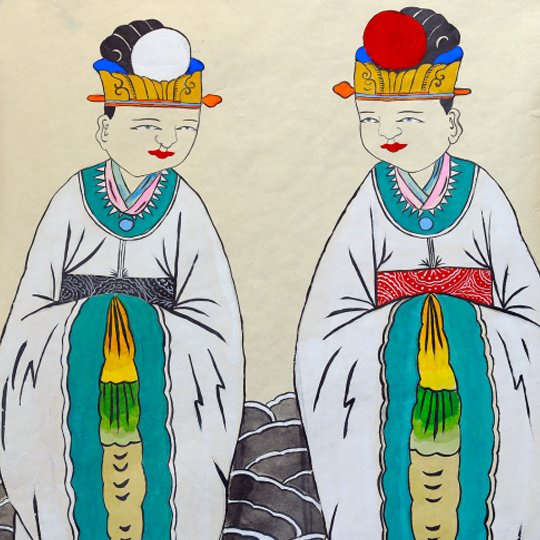
Roadmap
Phase 1. Start
Service Development / Partnership / IR / DiscordPlanning Development - 2022.08
Phase 2. Domestic
Airdrop Event / Influencer / Metaverse Service / Offline Service IntegrationEvent Promotion - 2022.10
Phase 3. Global Culture NFT
Art NGO / Portal & Cafe / SNS / CampaignMOI&GUD Convergence - 2022.12
What is Gut?
The
